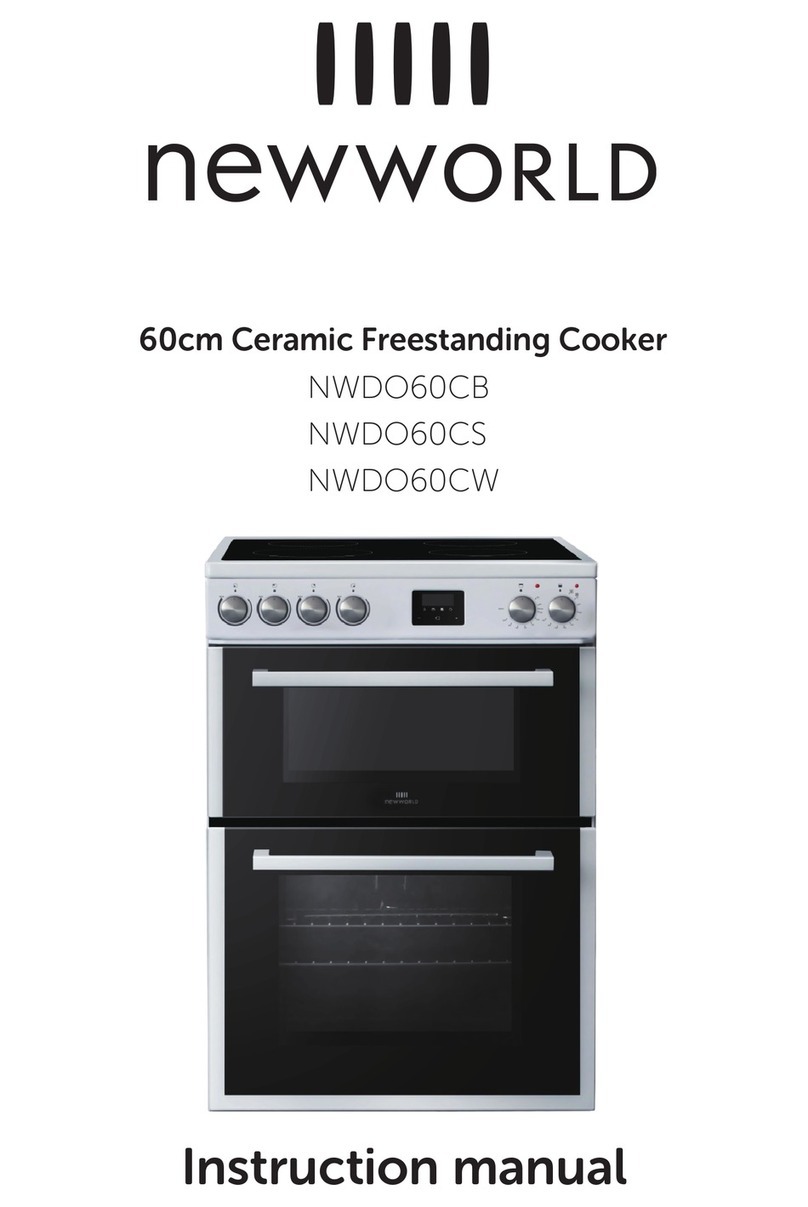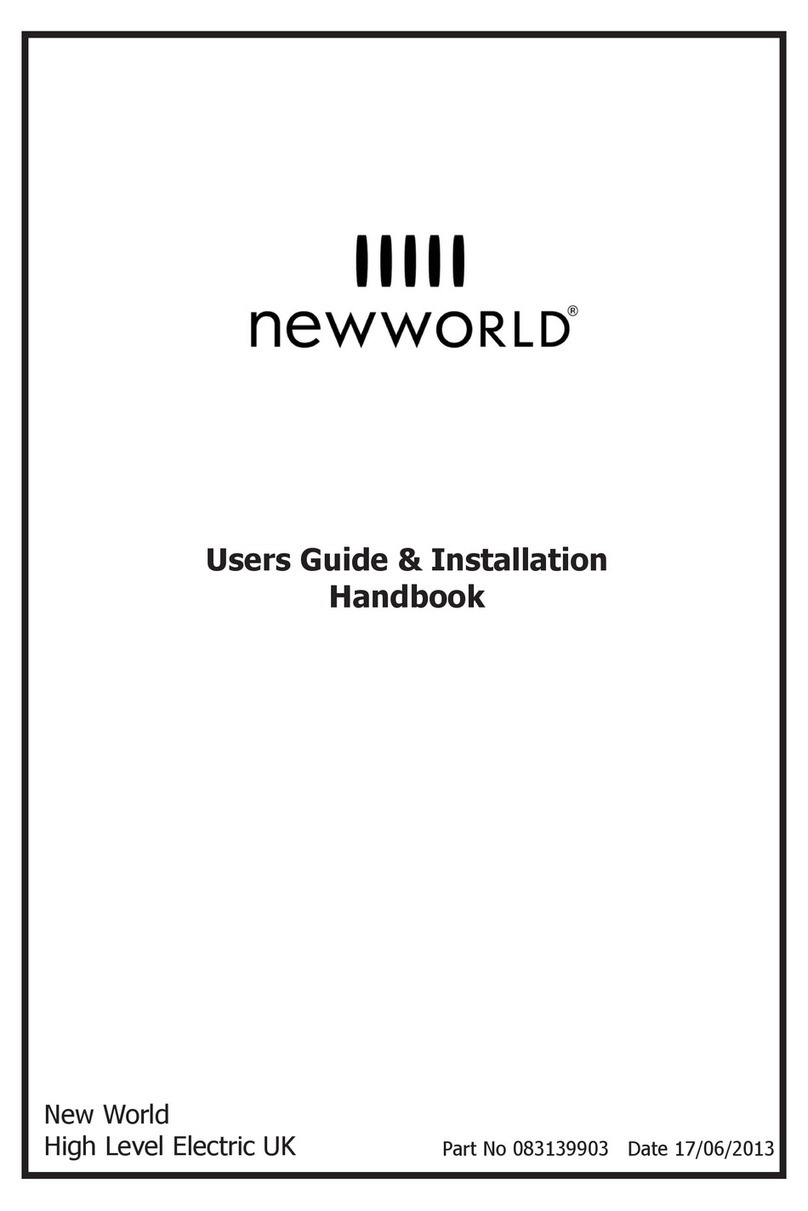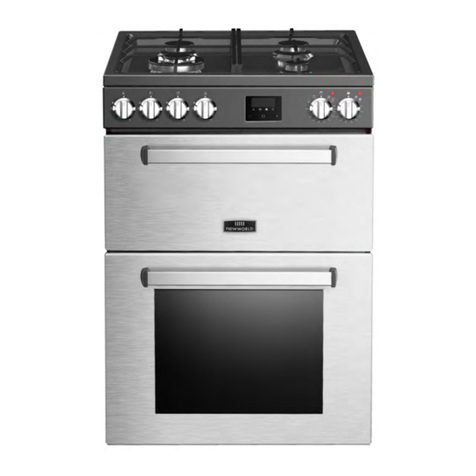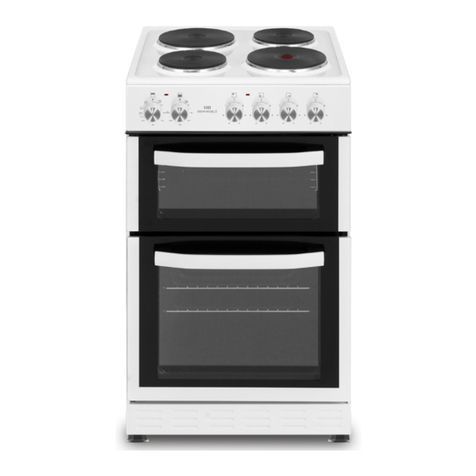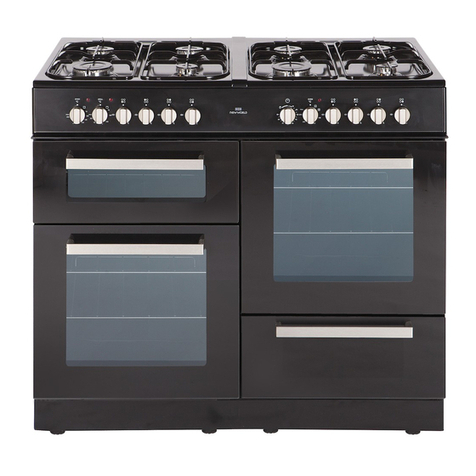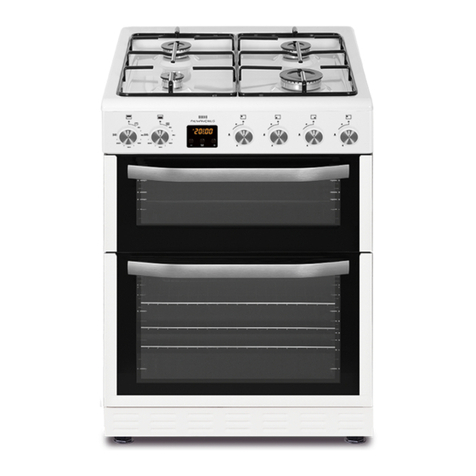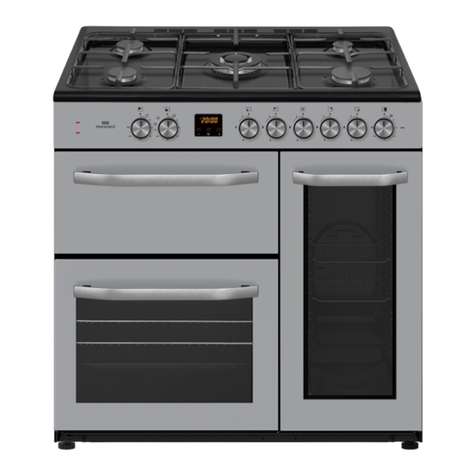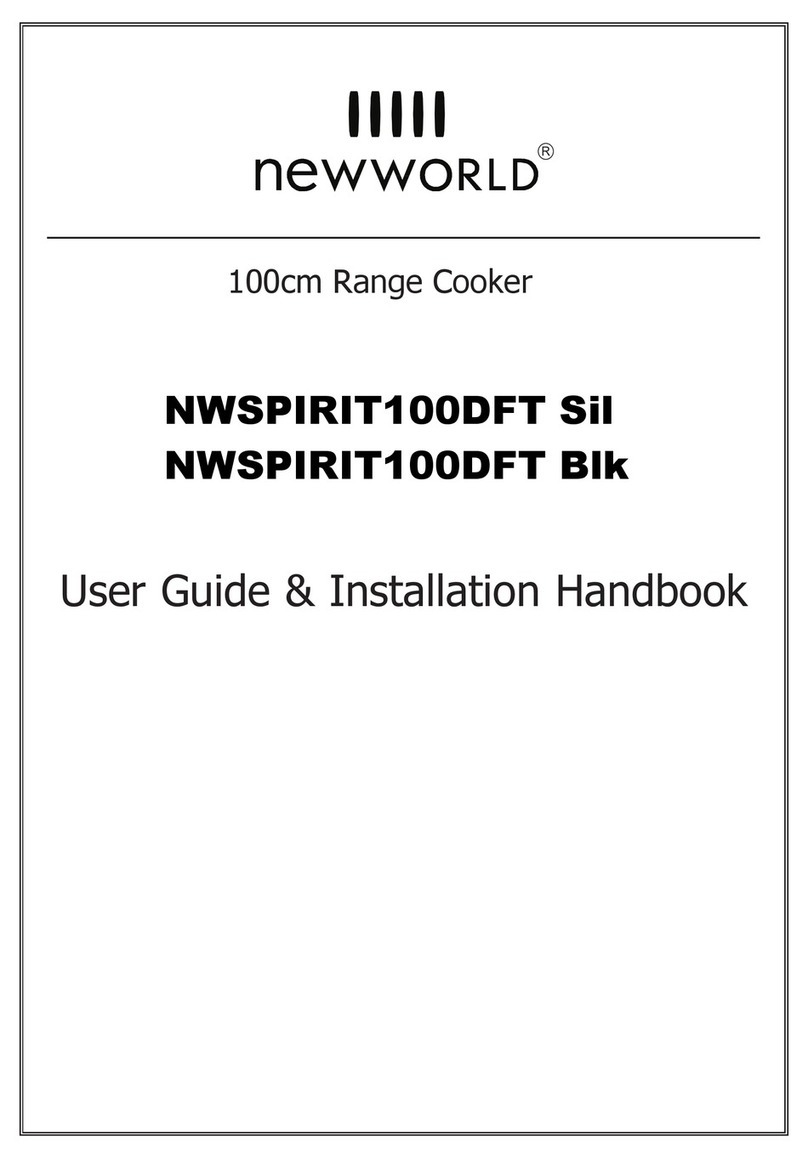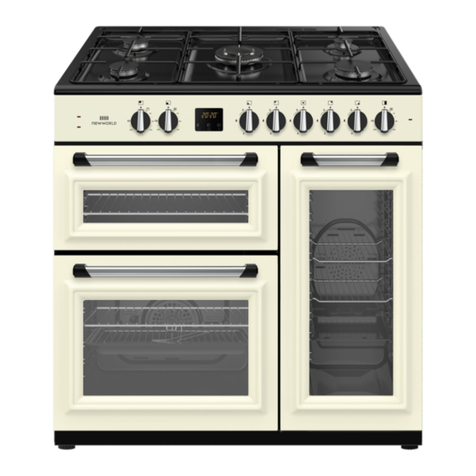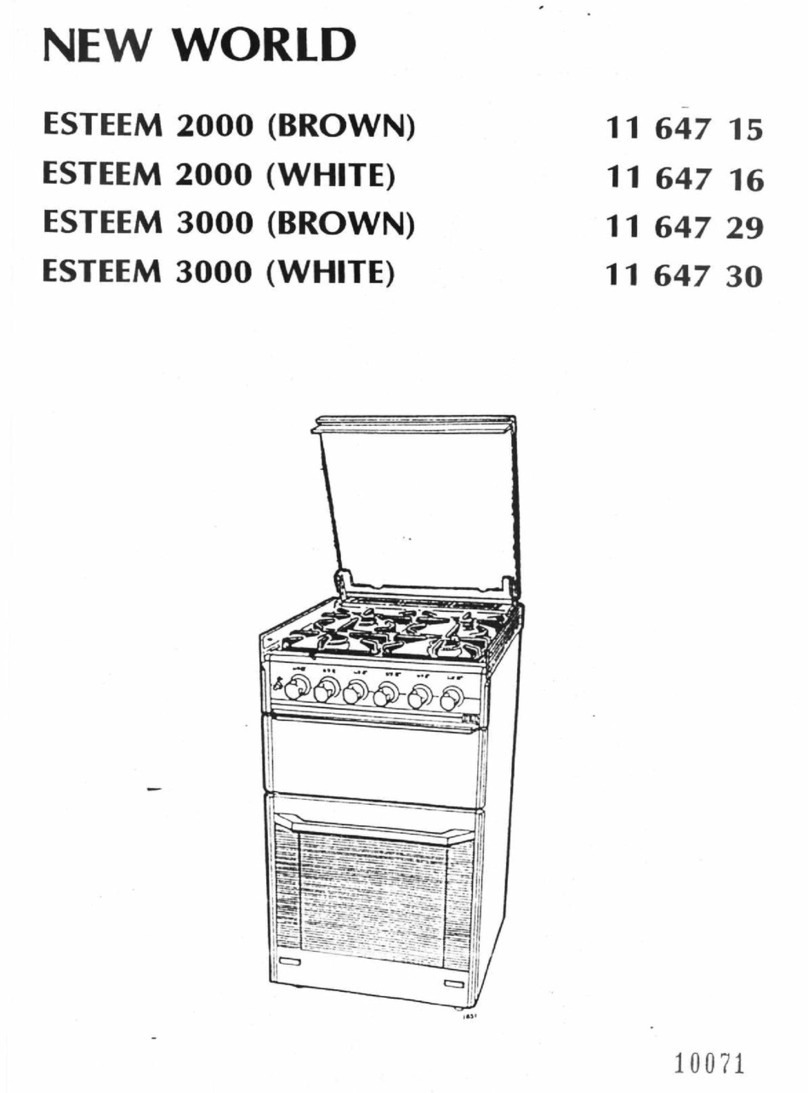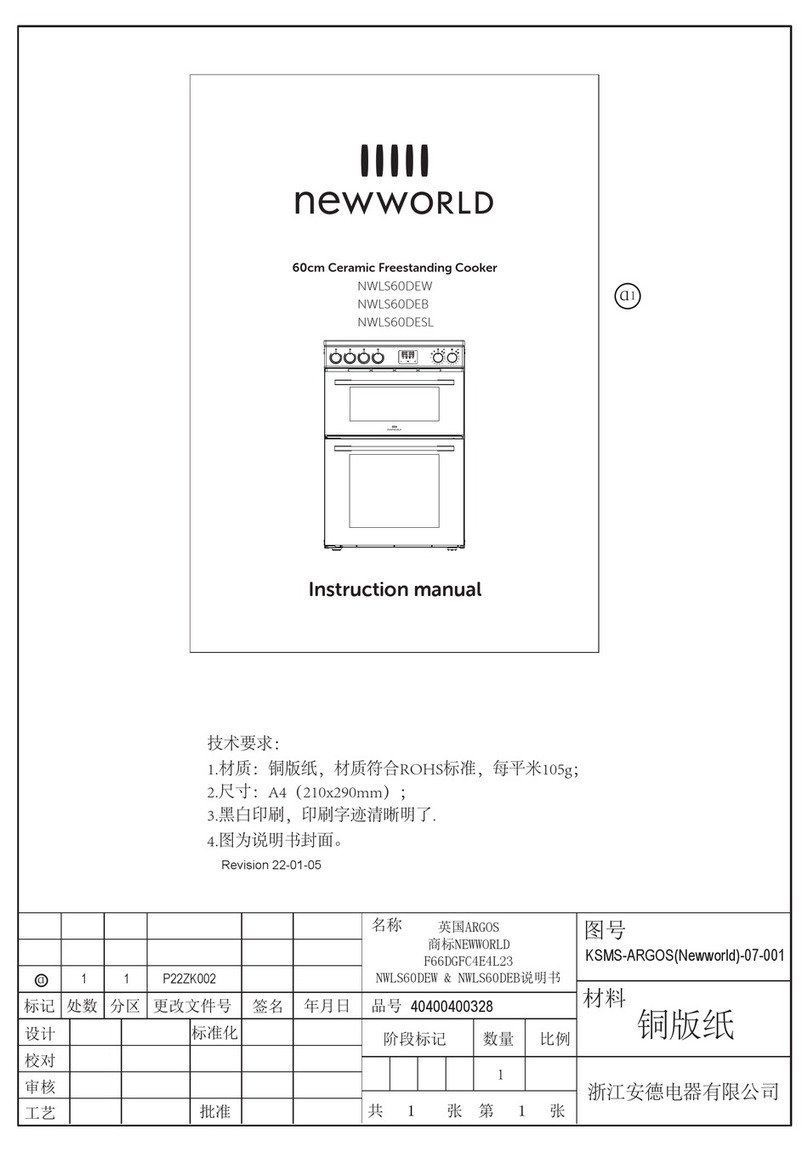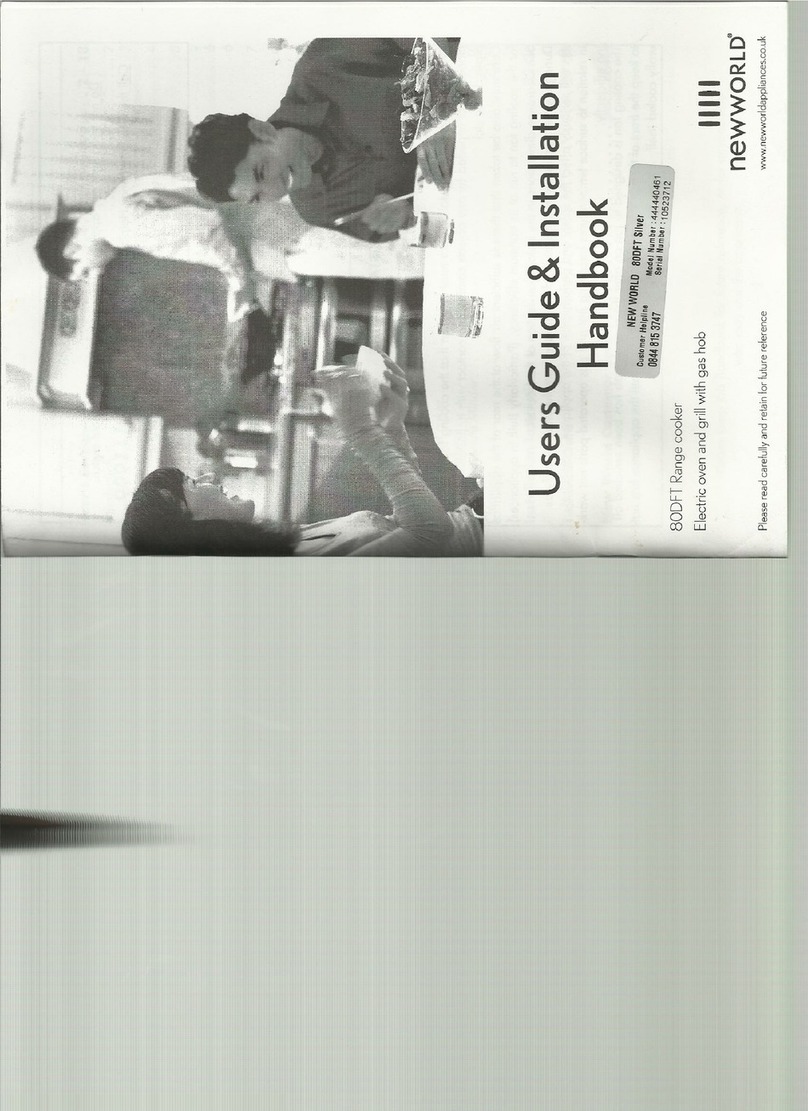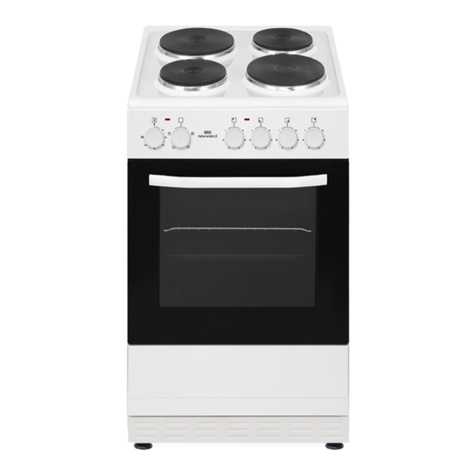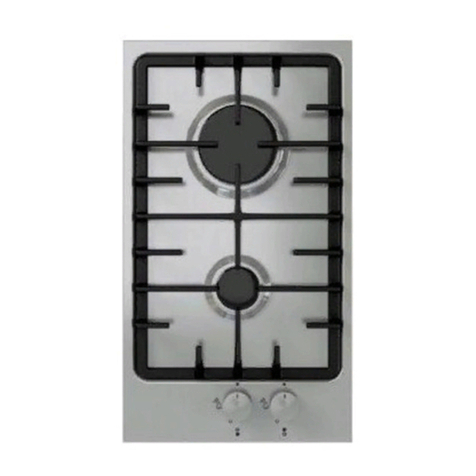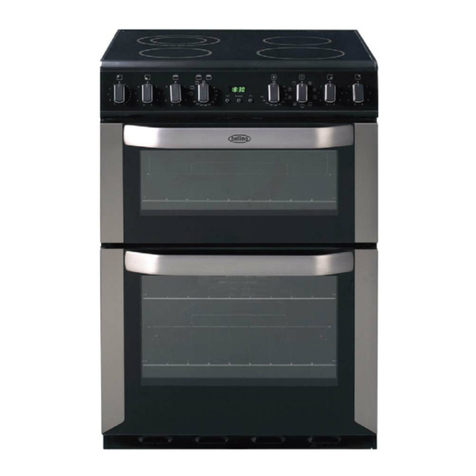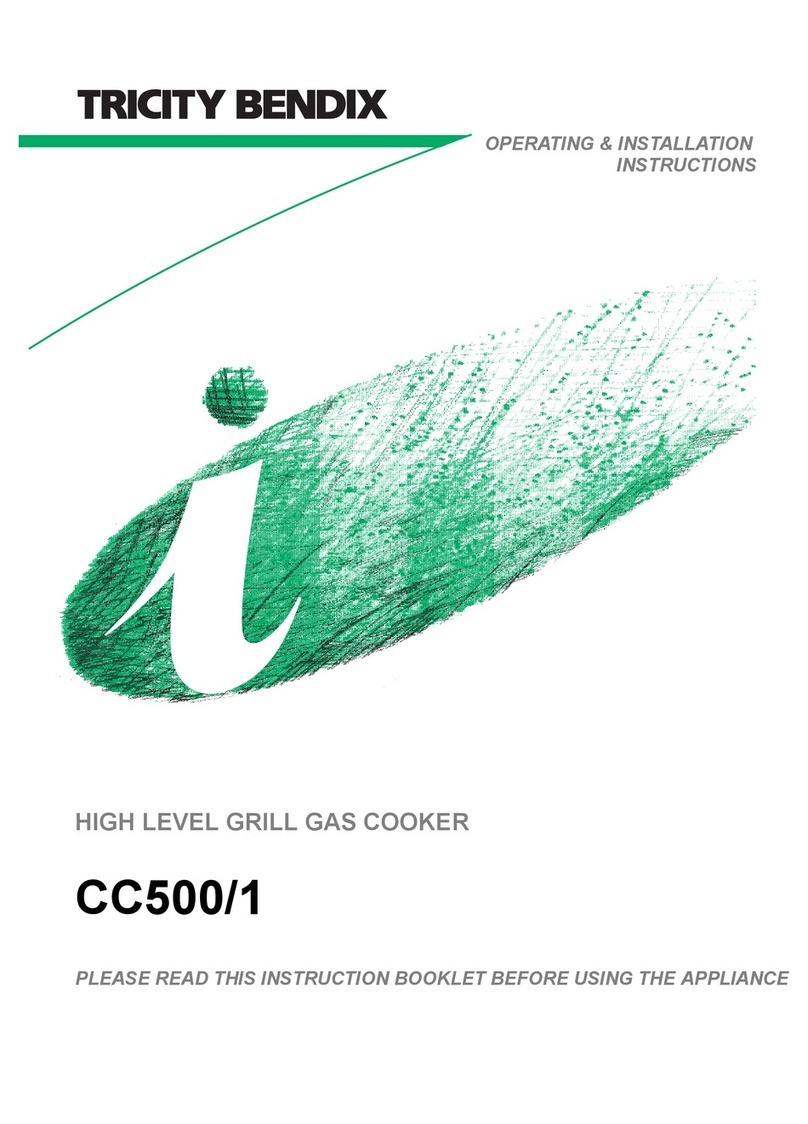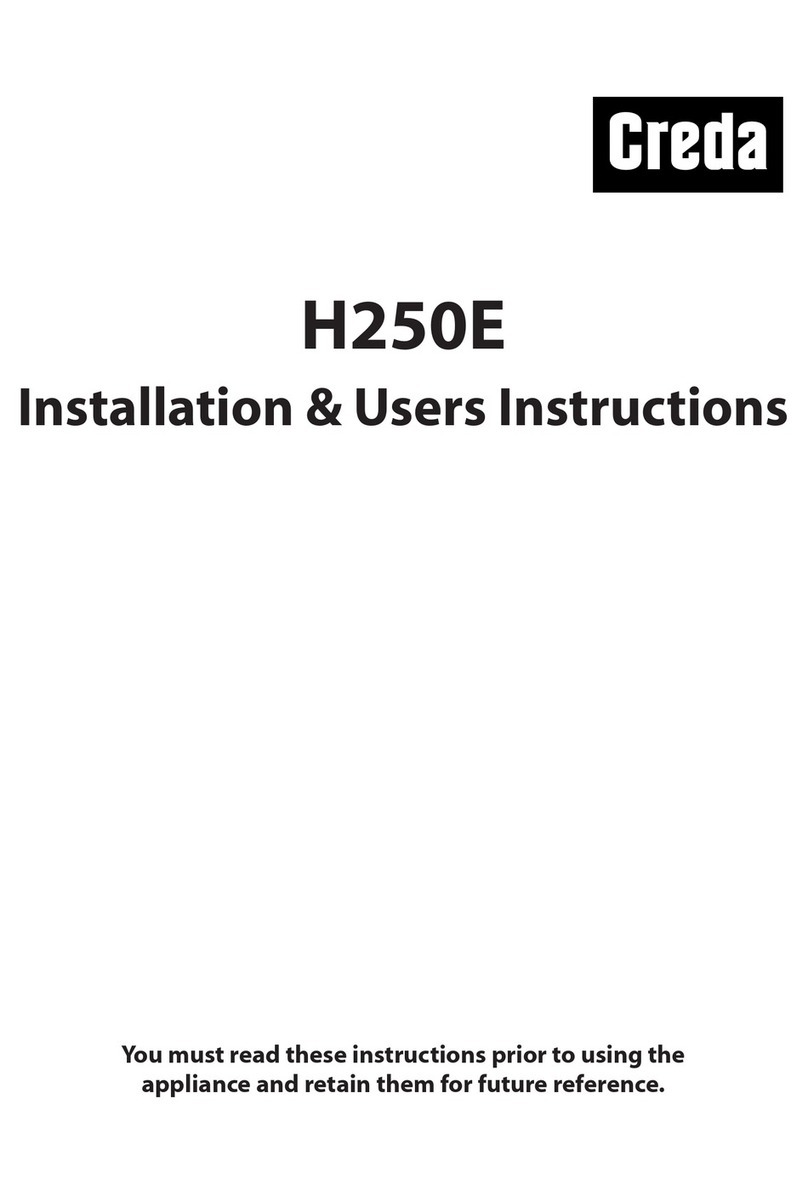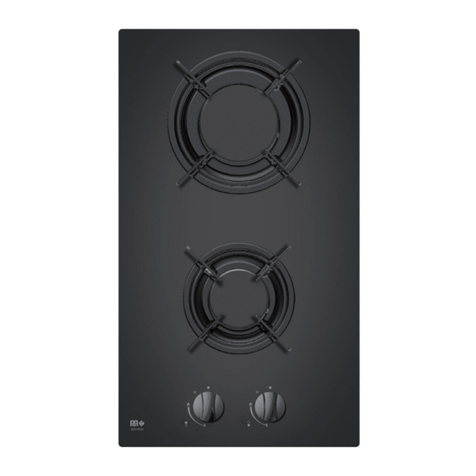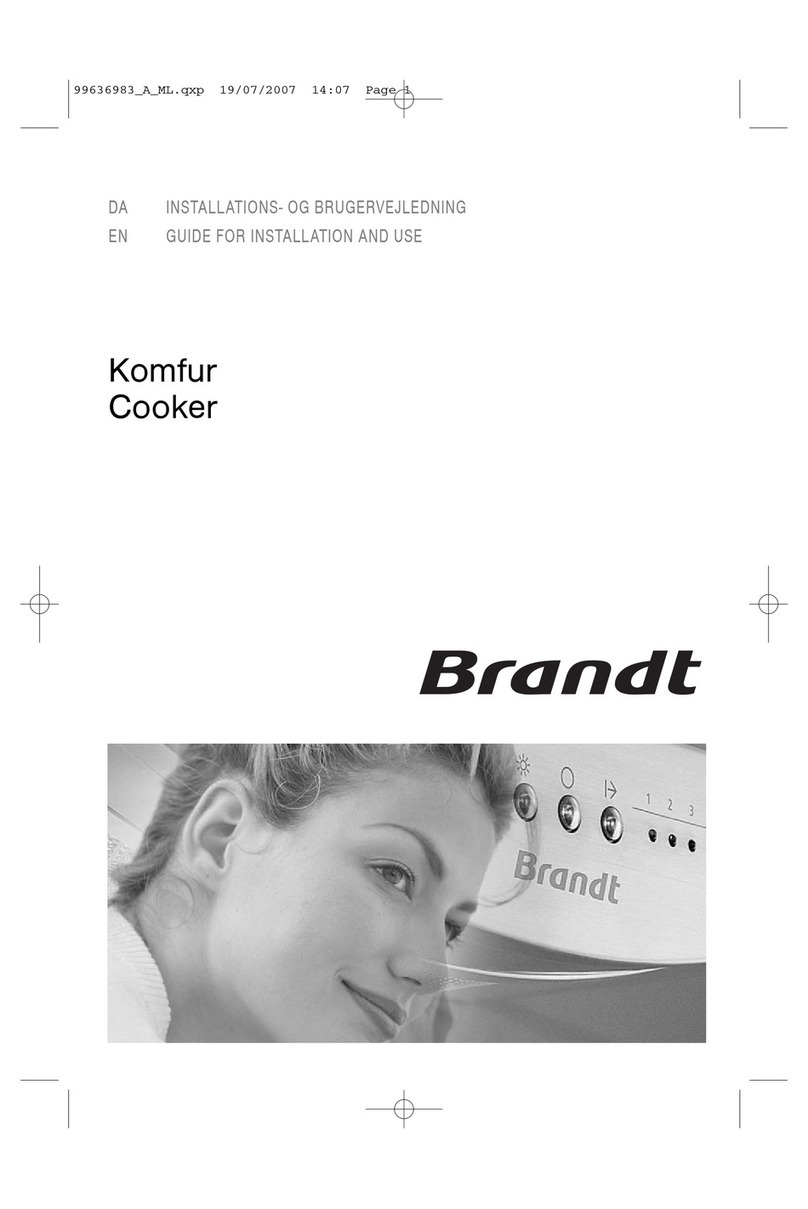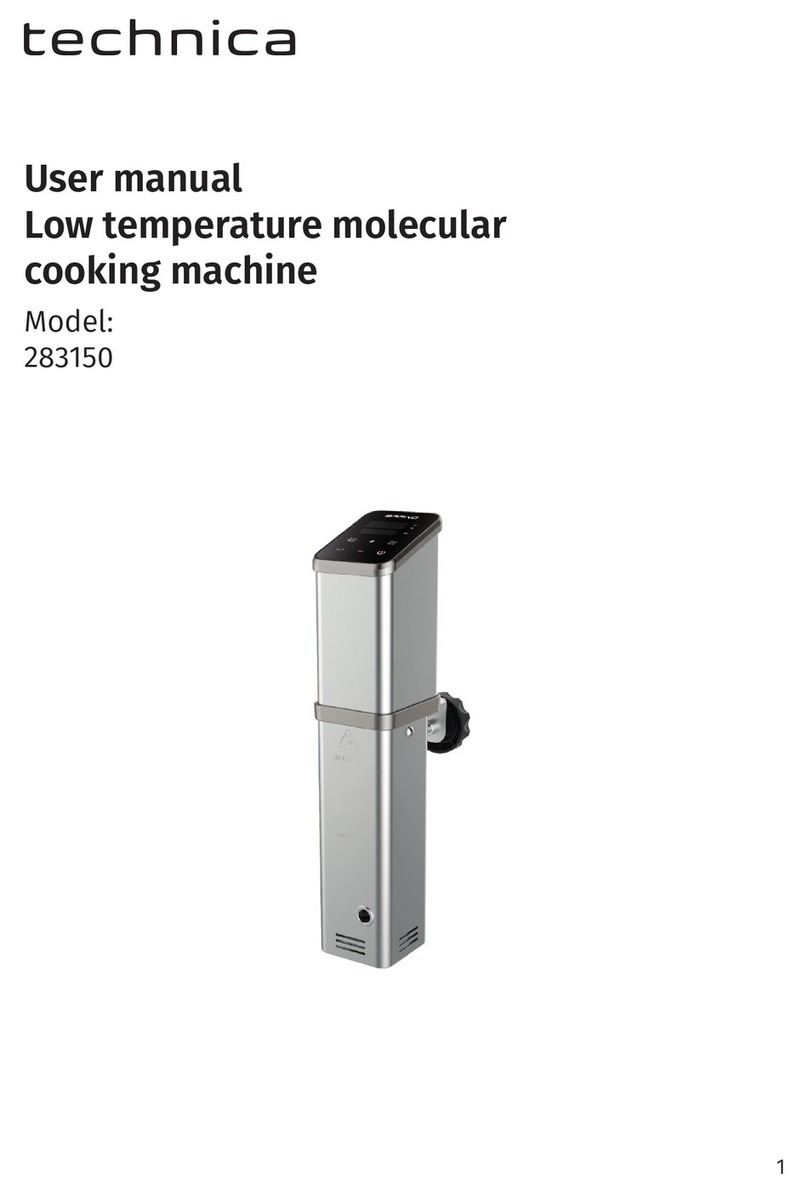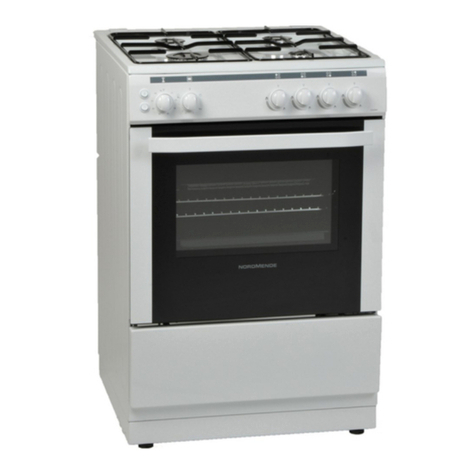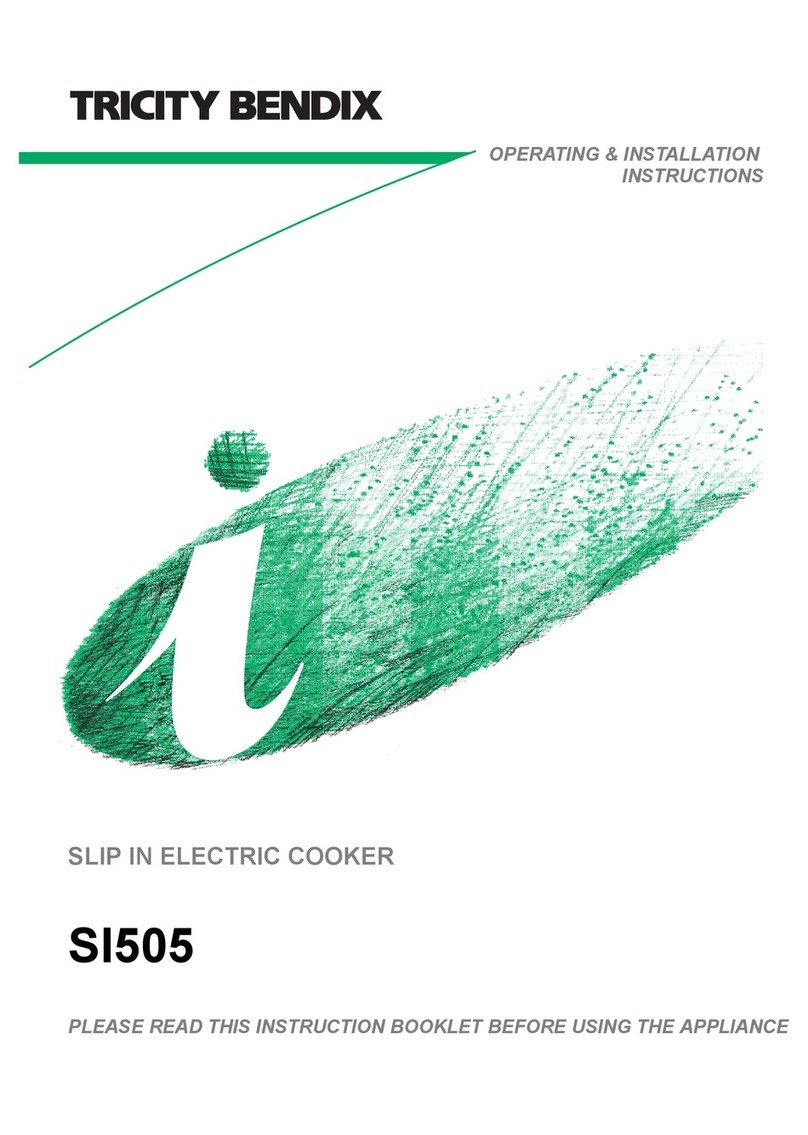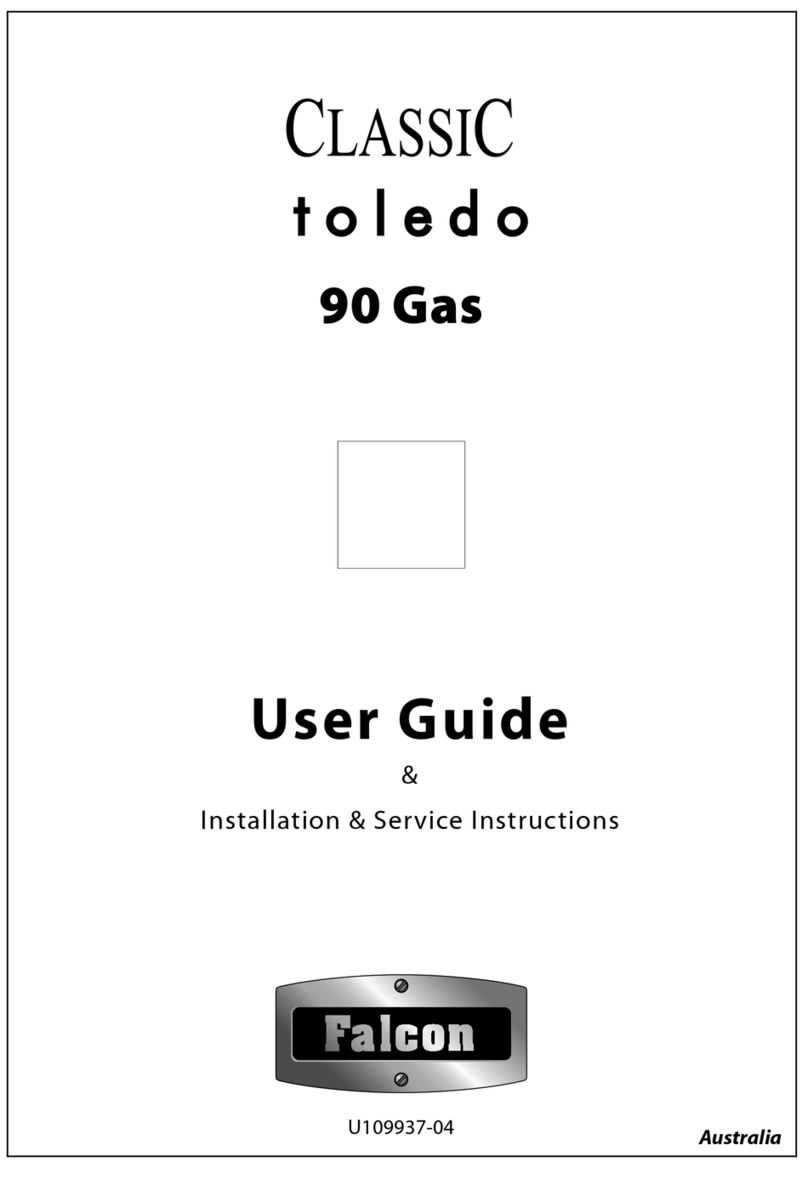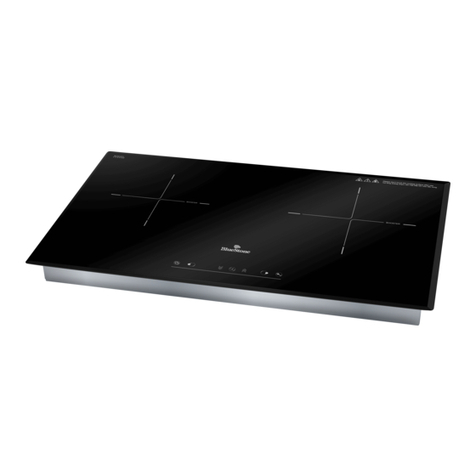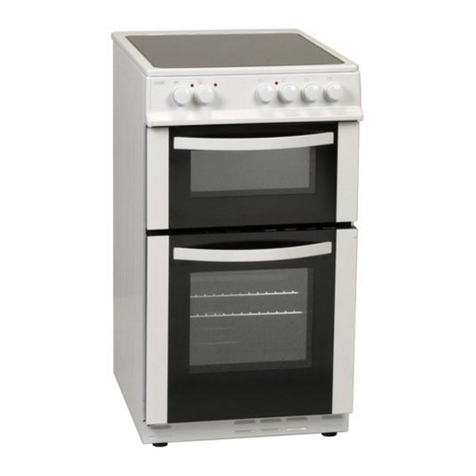Instructions for use, installation and connection 7
Oven guide levels
Baking pans and accessories (oven grid,
grease receptacle, baking tray, etc.) may
be inserted into the oven in 5 guiding
levels.
Appropriate levels are indicated in the
tables that follow.
Always count levels from the bottom
upwards!
Guides may be of three types, depending
on the model. In case of wire guides, the
grid and the baking pans must always be
inserted in the guide slides.
Oven accessories
(differ according to different models)
Oven grid shelf for placing pans and
trays, or for food to be prepared using
the grill see fig 1.
Dripping grease receptacle
(deep tray) for moist cake, for roasting or
for intercepting dripping oil/grease.
See fig 3.
Note! Deep roasting pan used for
intercepting the dripping juice and
grease during roasting, may not be
inserted into the first bottom level guide.
Baking pastry
Warnings
• Every effort has been made to include a
wide variety of foods within the cooking
guide. However all baking, roasting and
general cooking depends on personal
taste, please feel free to adjust any
temperatures and times to suit your
purposes.
• This appliance is a high performance
oven, as there may be differences
between this appliance and your old one,
we recommend that you follow the guide
lines given in this handbook to familiarise
yourself with the oven at first.
Using your fanned oven
• Fanned ovens usually cook differently to
conventional ovens, when converting a
conventional oven recipes, you may need
to reduce the temperature by
approximately 10oC or the cooking time
by approximately 10 minutes.
• Multiple items can be cooked in the oven
as the fan provides an even temperature
throughout the cavity.
• Recipes, which have similar cooking
times and temperatures, can be cooked
together if required; there should be no
flavor transfers between dishes.
• We would recommend that you try to
keep items such as cookies, small cakes
and muffins the same size and depth to
produce a uniform finish. Unevenly sized
items may cook at different rates.
• As with any oven, personal taste is
important to good cooking. Always make
sure that foods are heated thoroughly
before serving and be aware that cooking
times may vary.
• NOTE: During cooking condensation
may form on the appliance door, this is
perfectly normal and is due to the
meeting of cold air and warm air.
Checking cakes are cooked.
Use a skewer and pierce the thickest
part of the cake, if the skewer comes
back out clean, the cake is cooked.
The pastry has fallen.
Double check the recipe, you may have
added too much liquid. Always make
sure that you follow the mixing
instructions, especially if using powered
mixers.
Fig. 1 Fig. 3





















